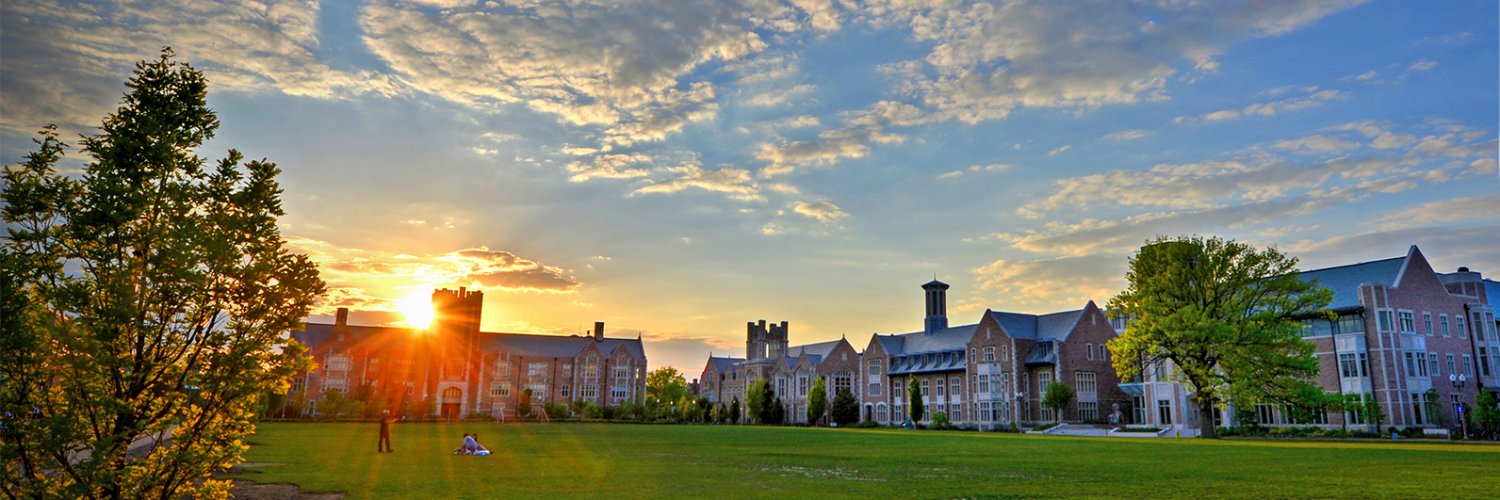
Daniel Kerschensteiner
@KLabVision
Prof @WUSTL. Vice-Chair @WustlDOVS. Co-Director #WashUNeuroPhD. To understand, preserve, and restore vision.
The ON/OFF dichotomy is fundamental to visual processing. In a new study led by Flori Soto, we identify a conserved molecular mechanism establishing the OFF pathway. rdcu.be/eikoa

We have innovated design of templates for CRISPR/Cas9 editing which allows efficient introduction of epitope tags in vivo. It is a simple hack which we hope to be broadly useful. Work by talented graduate student Chuanping Zhao. nature.com/articles/s4146…
Finally it's out! nature.com/articles/s4158… Thanks to Felix Baier, Karl Farrow and Hopi Hoekstra! And a big thank you to all the co-authors, reviewers, host institutes and funding sources! @BramNuttin, Arnau Sans Dublanc, Chen Liu, Victoria Tong, Julie Murmann and Keimpe Wierda
How flexible are essential innate behaviours and their underlying neural circuits? @Felix_Baier and I, with @HoekstraLab and @FarrowLab, addressed this question by studying the #evolution of threat avoidance in sister-species of Peromyscus mice. biorxiv.org/content/10.110…
We found that endogenous ligand for GPR139 is opioid peptide dynorphin. With this, GPR139 may not be an orphan any more but the 5th opioid receptor. Heavy lift by talented Xiaona Li with great thanks to all who contributed! nature.com/articles/s4146…
Join us in congratulating professor Susan K. Dutcher, PhD, on her election to the National Academy of Sciences. Her groundbreaking research on cilia is unlocking insights into chronic disease and continues to elevate WashU Medicine’s legacy of scientific excellence and impact.
65 years after Lettvin’s bug detector neurons in the frog retina, we revisit how the retina drives behavior—from reflexes to prey capture to brain-state modulation New review with @AnnaIntegrated & Serena Riccitelli in Annual Review of Vision Science 👇 tinyurl.com/ymp3vs4d
ATLAS, a rationally designed transsynaptic tracer is out today! Plasmids will soon be available on @Addgene addgene nature.com/articles/s4159… Many thanks to first authors Jackie Rivera and Haoyang Huang, and to collaborators, @blsabatini @Kanoski_Lab @vincentw_weng @beherring
Happy to share our recent work on a conductance that shapes substantially the output of rod photoreceptors. The role of the Ca2+-activated Cl- conductance in the membrane potential and light response of mouse rods jneurosci.org/content/early/…
1/ Why do late-stage cancer patients lose motivation & sink into apathy? 🔥Our new Science paper shows cancer activates a cytokine-sensing brain circuit to lower motivation.Great work by Aelita Zhu @sarahstarosta @Pignatelli_Lab @JanowitzTobias &team!🧵 🔗 doi.org/10.1126/scienc…
Our RUVBL2 paper is online published by Nature: trebuchet.public.springernature.app/get_content/8a…
Research from @KLabVision published in @PNASNews, reveals how mice use vision to #hunt! 🐭🔬 Jenna Krizan, PhD, and colleagues revealed that some neurons in the superior colliculus inherit their motion-sensitive signaling patterns from the #retina. #eyes ophthalmology.wustl.edu/the-role-of-di…
Our latest on GPCR function in the brain. We report that glutamate receptor mGlu4 needs to be properly positioned at synapses of cholinergic interneurons in NAc by cell adhesion molecule ELFN1 to regulate opioid reward. pnas.org/doi/epub/10.10…
Excited to present the result of a fantastic collaborative effort - funded by the National Institutes of Health, including the NIH HEAL Initiative, to develop safer analgesic drugs. nature.com/articles/s4158…
We must learn to showcase the practical significance of basic research, demonstrating how seemingly arcane investigations yield transformative applications, writes @tonyzador. thetransmitter.org/outreach/how-t…
Here it is finally: Our mathematical methods book for life scientists! Aimed at advanced undergrads and beginning grad students, plus all those who want a deeper look at the math behind quantitative biology. 1/3
📘 Mathematics in Biology ✍ Markus Meister, Kyu Hyun Lee & Ruben Portugues A textbook for advanced undergraduate and graduate students across the biological sciences that provides a foundation for understanding the methods used in quantitative biology: mitpress.mit.edu/9780262049405/…
Excited to share our latest study! 🧠✨ We reveal how non-direction-selective retinal ganglion cells encode motion beyond their receptive field, relaying the unconventional signals to the brain. A new insight into multimodal neurons in visual processing! pnas.org/doi/10.1073/pn…
Here, we present a powerful, flexible tool that expands the reach of genetic screens to a wealth of previously inaccessible biological questions. We encourage our colleagues to reach out for protocols, reagents, etc. nature.com/articles/s4155…
Our paper, "The promise and peril of comparing fluorescence lifetime in biology revealed by simulations", is now on @eLife: doi.org/10.7554/eLife.…. Hope readers will use our package to design and interpret FLIM experiments rigorously, and also give us feedback.
Interested in quantifying absolute levels of biological signals and comparing signaling dynamics across time and animals? Fluorescence lifetime, insensitive to sensor expression, could achieve this. Does this hold true in real biology experiments? Check out our manuscript. (1/8)
Our paper "GABAergic amacrine cells balance biased chromatic information in the mouse retina" is now published in @CellReports cell.com/cell-reports/f…
Excited to share our new preprint where we uncovered how inhibitory interneurons in the retina process color information in their dendrites. A #tweetprint with authors @mkorympidou Sarah Strauss @TimmSchubert @kfrankelab @teulerlab @CellTypist biorxiv.org/content/10.110…
I am thrilled to share the published version of our study on how neuropeptide signals regulate feeding in the hypothalamus! We imaged endogenous peptide signals in subcellular compartments during behavior. Below is an updated summary: rdcu.be/dZlI3